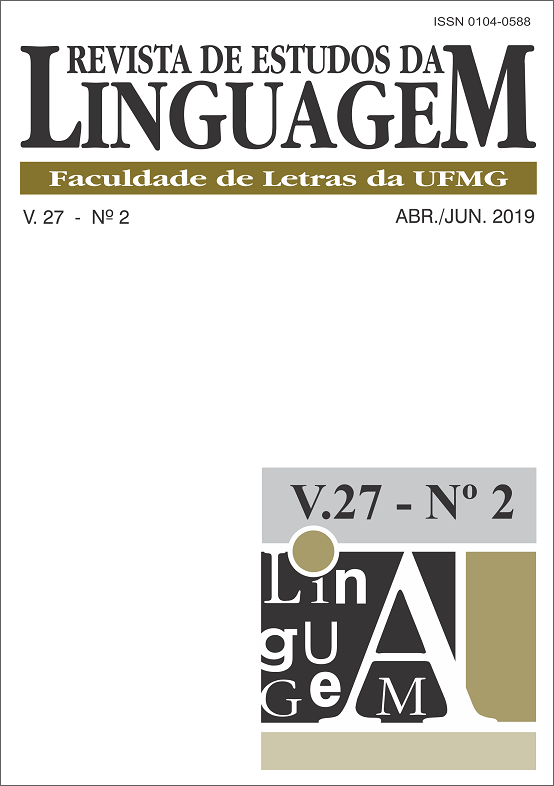Fonologia autônoma, sintaxe mais simples: explorando as interfaces na Arquitetura em Paralelo / Autonomous phonology, simpler syntax: exploring the interfaces in the Parallel Architecture
DOI:
https://doi.org/10.17851/2237-2083.27.2.811-838Palavras-chave:
interface sintaxe-fonologia, Sintaxe Mais Simples, Arquitetura em Paralelo, regra do acento nuclearResumo
Resumo: O objetivo deste artigo de cunho teórico é explorar a visão particular sobre a interface entre sintaxe e fonologia na teoria da Arquitetura em Paralelo (AP) formulada por Jackendoff (1997, 2002, 2007). Embora não disponha de um componente fonológico próprio, essa teoria tomou os desenvolvimentos da fonologia não-linear na década de 1970 como ponto de partida (GOLDSMITH, 1976; LIBERMAN; PRINCE, 1977; MCCARTHY, 1982). A ideia central da AP é distribuir a complexidade da gramática em diferentes “camadas” relativamente independentes, a fim de desonerar a sintaxe, que teria assumido um papel explanatório exagerado nas teorias gerativas mainstream (CULICOVER; JACKENDOFF, 2005). Segundo Culicover e Jackendoff (2005), ao livrarmos esse componente da responsabilidade de explicar todos os fenômenos linguísticos relevantes, seria possível formular uma Sintaxe mais Simples. Após esclarecer algumas características gerais da AP e sua relação com as teorias fonológicas não-lineares, o artigo focará no que este modelo tem a dizer sobre a interface entre sintaxe e prosódia. O artigo ilustrará a visão da AP sobre essa interface a partir de uma discussão específica acerca da regra do acento nuclear (CHOMSKY; HALLE, 1968; HALLE; VERGNAUD, 1987). A ideia principal é que as conclusões de Menuzzi e Mioto (2006), que vão de encontro à teoria de Cinque (1993), podem ser compreendidas como uma evidência positiva em prol da concepção da interface fonologia e sintaxe sugerida na AP, a qual confere mais autonomia ao componente fonológico.
Palavras-chave: interface sintaxe-fonologia; Sintaxe mais Simples; Arquitetura em Paralelo; regra do acento nuclear.
Abstract: The main goal of this theoretically oriented paper is to lay out the particular view of the interface between syntax and phonology in the theory of the Parallel Architecture (PA) as formulated by Jackendoff (1997, 2002, 2007). Even though it doesn’t have its own phonological component, this theory took the developments of non-linear phonology in the 1970s as a starting point (GOLDSMITH, 1976; LIBERMAN; PRINCE, 1977; MCCARTHY, 1982). The central idea in the PA is to distribute the complexity of the grammar among relatively independent tiers, in order to unburden syntax, which took an exaggerated explanatory role in mainstream generative theories (CULICOVER; JACKENDOFF, 2005). According to Culicover and Jackendoff (2005), in liberating this component from the responsibility of explaining all relevant linguistic phenomena, it may be possible to envision a Simpler Syntax. After clarifying some general characteristics of the PA and its relationship to non-linear phonological theories, the paper will focus on what this model has to say about the interface between syntax and prosody. The paper will illustrate the PA view on this interface through a specific discussion about the nuclear stress rule (CHOMSKY; HALLE, 1968; HALLE; VERGNAUD, 1987). The main idea here is that the conclusions reached by Menuzzi and Mioto (2006), which go against Cinque’s (1993) theory, can be understood as positive evidence for the conception of the syntax-phonology interface suggested in the PA, which grants more autonomy to the phonological component.
Keywords: syntax-phonology interface; Simpler Syntax; Parallel Architecture; nuclear stress rule.





